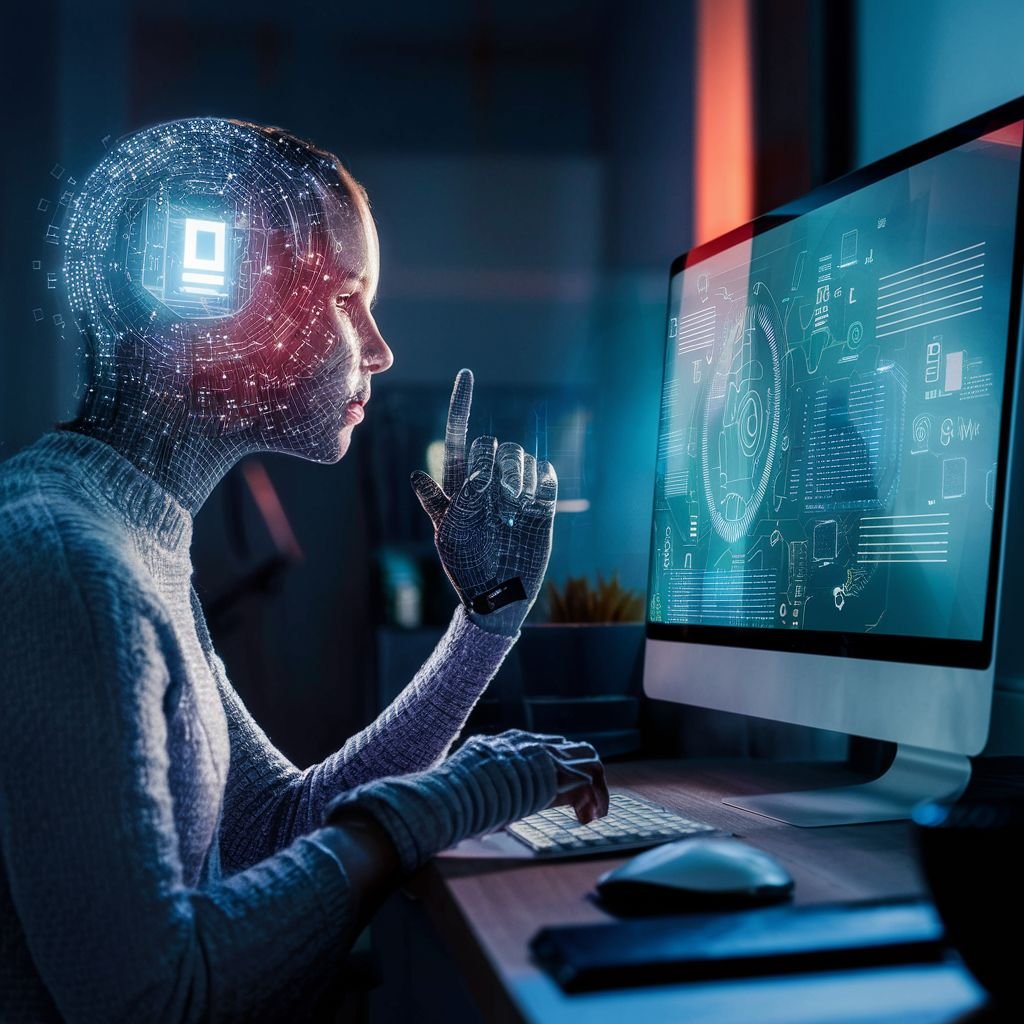Overview of AI Tools
With simple prompts, complex results can be achieved. Generative AI outputs content based on the given input. What the human types to generate the AI response is called a Prompt, and when a person tweaks their prompt to get the desired results person is a Prompt Engineer. Prompt Engineering is the process of guiding generative artificial intelligence (AI) solutions to produce desired outputs through detailed instructions.
Text-Based AI Tools:
Masters of Language: Extremely efficient at processing and generating text. They can write different kinds of creative content, translate languages, answer questions in an informative way, write code, take on personas, and more.
AI Assistants: Imagine a smart sidekick for your productivity and collaboration tools. AI assistants can help with tasks like writing emails, summarizing documents, or generating creative text formats.
Image-Based AI Tools:
From Text to Canvas: These generate complex images based on text descriptions. Once a text text prompt describes a desired image the AI tool normally shows 4 variations of the output.
Editing Magic: Some image-based AI tools don't just create new images, they can also enhance existing ones. Fix photos, add to them, and edit like a pro.
Other Creative Realms:
Musical Minds: Generative AI can also output music composition. There are tools that can write entire songs, create new melodies, and output in whatever genre is specified.
Beyond Text and Images: The world of generative AI is constantly expanding. Researchers are exploring its potential in other creative areas like generating 3D models or video content.
-
AI agents are like smart software programs that can learn and act in their environment to achieve goals. They're kind of like tiny robots for the digital world, able to sense things, make decisions, and take actions. Here's a quick rundown of their capabilities:
Automated Helpers: AI agents can automate repetitive tasks, freeing up human time and effort. Imagine a customer service agent that can answer frequently asked questions or a data analyst that can sort through large datasets.
Intelligent Assistants: They can act as intelligent assistants, providing information, completing tasks, and even controlling smart devices in your home. Think Siri or Alexa, but with the potential to handle more complex requests.
Learning Machines: Some AI agents can learn and improve over time. By analyzing data and feedback, they can get better at achieving their goals. This is particularly useful for tasks that require adapting to new information or situations.
Going Beyond Preset Rules: While some AI agents follow predefined rules, others can operate more autonomously. They can set their own goals and take actions within certain parameters to achieve them.
Working in Many Fields: AI agents have applications in various fields, from healthcare and finance to manufacturing and transportation. They can be used to optimize processes, improve decision-making, and even perform dangerous or tedious tasks.
-
To program AI, computer scientists need a blend of skills from different areas. Here's a breakdown of the key ones:
Foundational Computer Science: Algorithms and Data Structures: The core building blocks of programming. Understanding how to design efficient algorithms and choose appropriate data structures is crucial for developing efficient AI models.
Programming Languages: Familiarity with languages like Python, C++, or Java is essential for implementing AI algorithms. Python is particularly popular in AI due to its readability and extensive libraries.
Math and Statistics: Linear Algebra and Calculus: These are the mathematical workhorses of AI. Linear algebra is used for tasks like matrix manipulations in neural networks, while calculus helps optimize AI models during training.
Probability and Statistics: Understanding probability and statistics is key for tasks like data analysis, evaluating model performance, and handling uncertainty in AI systems.
Machine Learning and Deep Learning: Machine Learning Fundamentals: Grasping core machine learning concepts like supervised learning, unsupervised learning, and reinforcement learning is essential.
Deep Learning Techniques: Deep learning has become a major force in AI. Familiarity with neural networks, convolutional neural networks (CNNs) for image recognition, and recurrent neural networks (RNNs) for sequence data like text, is valuable.
Software Engineering Practices: Writing clean, maintainable, and efficient code is crucial for building robust AI systems.
Data Management and Analysis: AI thrives on data. Being able to work with large datasets, clean and pre-process them, and extract meaningful insights is essential.
Problem-Solving and Critical Thinking: AI development involves tackling complex problems. Strong problem-solving skills and the ability to analyze situations critically are key assets.
-
The rise of AI, particularly generative AI, has sparked concerns about its potential to infringe on copyrighted material. Here's a breakdown of the key areas of worry:
Unlicensed Training Data: AI models are trained on massive amounts of data, which can sometimes include copyrighted works like text, images, or music. The question arises: Does using copyrighted material for training infringe on copyright, or is it considered fair use? The legal landscape is still evolving on this point.
Derivative Works and Originality: AI can generate creative outputs like text, music, or images that closely resemble existing copyrighted works. This raises concerns that AI might be creating unauthorized derivative works, infringing on the rights of the original creator.
Who Owns the Copyright? When AI generates creative content, it's not always clear who owns the copyright. Is it the programmer who built the AI, the person who provided the prompt, or the AI itself? This lack of clarity can lead to legal disputes.
Blurring the Lines of Authorship: AI-generated content can be so sophisticated that it can be difficult to distinguish it from human-created works. This can make it challenging to enforce copyright protections and ensure proper attribution.
-
Citations:
[1] https://www.gvpce.ac.in/CHEMICAL/syllabus/R-2019/19CS11D1_AITA_SYLLABUS.pdf
[2] https://www.youtube.com/watch?v=jiwQsW-Tv8k
[3] https://teachable.com/blog/ai-curriculum-generator
[4] https://www.roitraining.com/course-937-hands-on-generative-ai-tools-and-techniques/
[5] https://aiml.rice.edu/ai-courses
